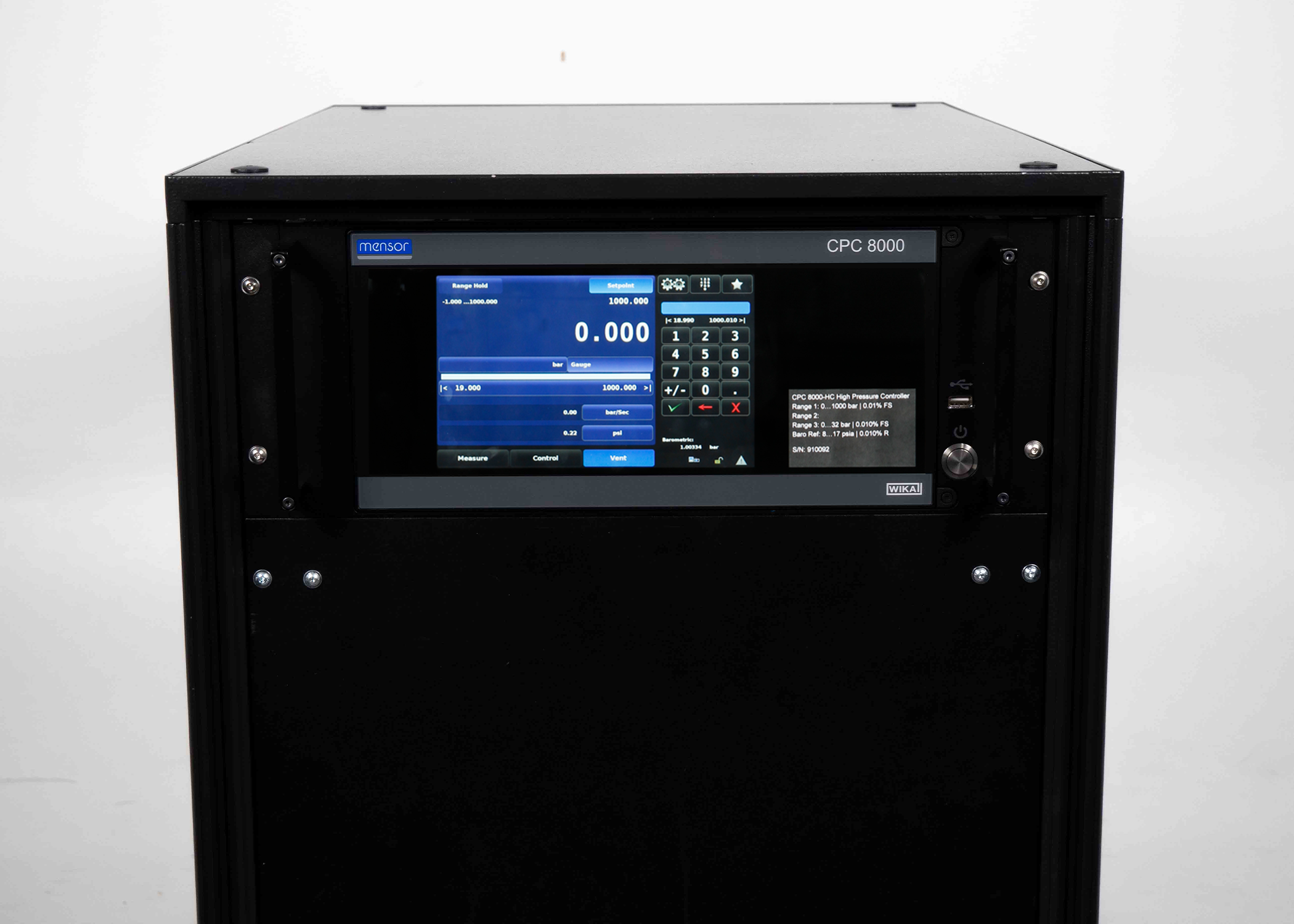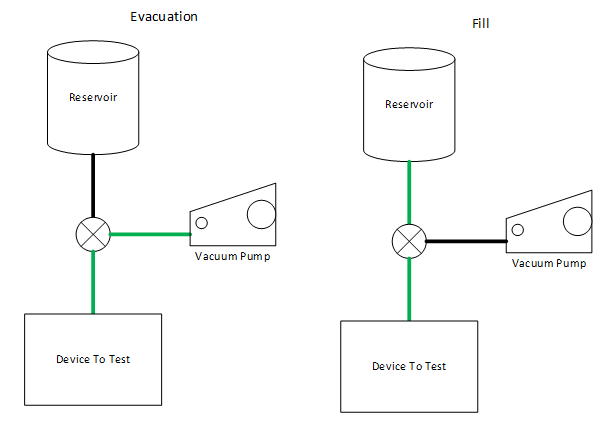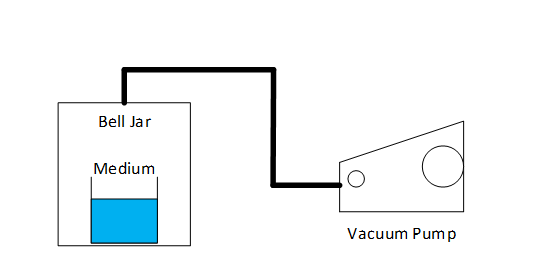A maximum volume control not only depends on the capabilities of a high-pressure hydraulic controller, but of the pressure medium and the entire system controlled.

Let’s look at our CPC8000-H High-Pressure Hydraulic Controller as an example. This instrument has a max pressure range of up to 23,000 psi, but the maximum volume the CPC8000-H can control will vary depending on the pressure medium.
Not all fluids are the same
Mensor commonly uses water or sebacate oil as the pressure medium. Take a look at the differences in compressibility between water, sebacate, and santovac:

System Rigidity
Everything changes dimensions under pressure. This means tubing, volumes, and fittings will all expand when containing the controlled pressure. The more rigid the system is, the more volume you can control.
Trouble from bubbles
Air entrainment is often overlooked. When the pressure-controlled system has air in it and is compressed, the air dissolves into the hydraulic medium. From a pressure control standpoint, it causes a number of issues:
- It makes the hydraulic fluid more compressible (spongy) which reduces the volume that can be controlled
- When the hydraulic fluid is compressed adiabatically, the gas temperature will rise rapidly and heat the fluid, which slows the response time of the controller
- If the gas content is extreme, bubbles can form that can cause cavitation in the medium that can damage the CPC8000-H
The best practice is to purge any air out of the controlled volume. If the geometry is fairly simple, we can crack a fitting loose, control to a low pressure until the hydraulic medium comes out, and tighten the fitting. If the geometry is more complex, vacuum filling is preferred. This method can ensure there are no gas pockets in the wetted volume. A purge requires a tank with the pressure medium in it:

At the bottom of this tank, there is a three-way valve that has the common port connected to the volume you are trying to fill. The other port of the valve is connected to the vacuum pump.
First, connect the vacuum pump to the volume and evacuate as much air as possible out of it. Then, switch the valve to connect the volume to the tank so the medium will be sucked into the volume.
If you suspect the medium has a significant amount of air entrained in it, the only way to get rid of the air is to put the medium in a vacuum. As the environment around the medium gets lower than the partial pressure of the entrained air, the air will bubble out. Typically, this is done by putting the hydraulic medium in a vacuum chamber, like a bell jar.

In conclusion, the compressibility of the pressure medium and problems with air entrainment both play into determining the maximum amount of volume hydraulic controllers, like our CPC8000-H, can control. Read more about the compressibility of different fluids here: https://blog.mensor.com/blog/the-compressibility-of-fluids-media-for-hydraulic-pressure-calibration or contact the Mensor service team for assistance in proper purging techniques or questions about how to increase the maximum volume of your CPC8000-H


